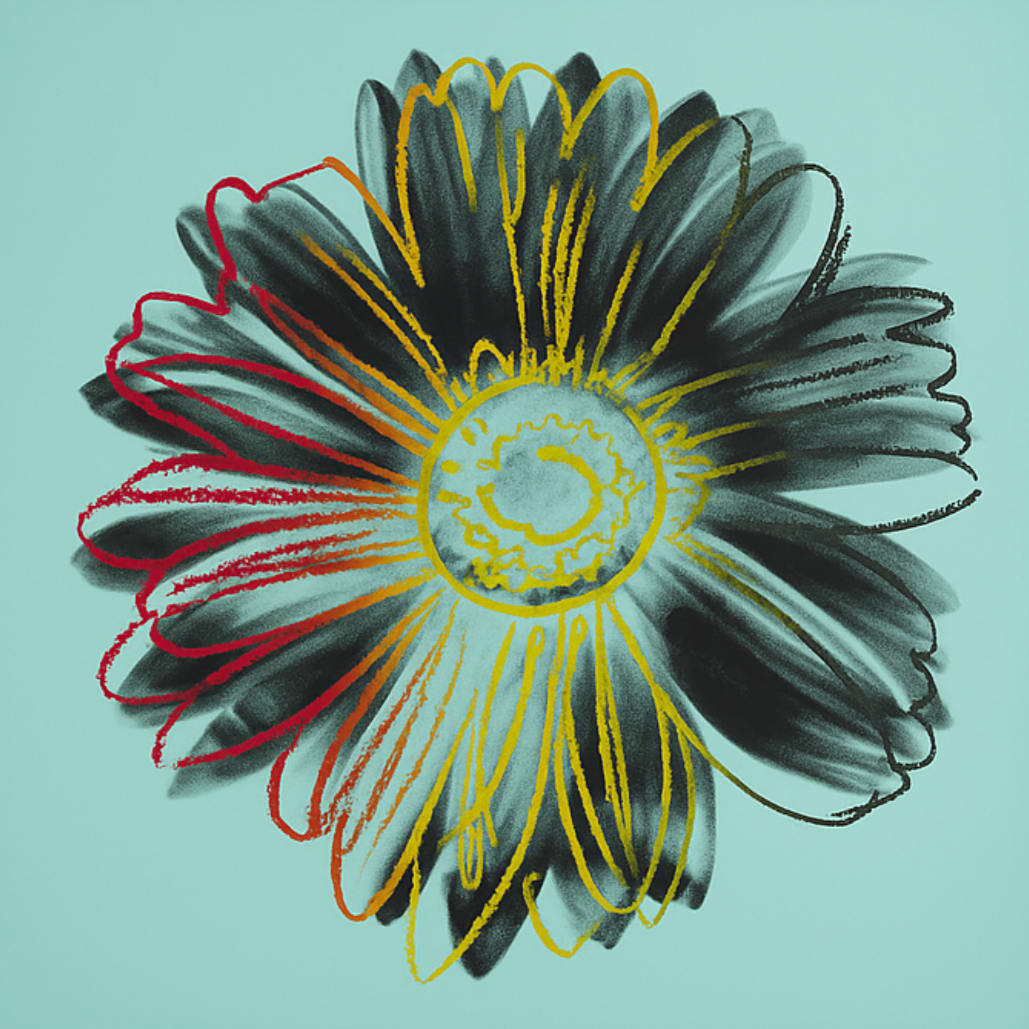
Andy Warhol
Unique
Stamped by artist's estate
96.5 × 96.5 cm
Andy Warhol’s Daisy print marks a distinct and compelling shift from Warhol’s usual subject matter. Unlike the repetitive, commercial imagery that defined much of his early career, Warhol’s floral subjects—particularly Daisy—reveal a surprisingly tender and introspective engagement with nature. This may seem at odds with his public persona, but Warhol’s affinity for the natural world was both genuine and long-standing, stemming from his early years in Pittsburgh and continuing throughout his life and practice.
Daisy draws on the legacy of Warhol’s celebrated Flowers series from the 1960s, a set of ten vividly colored screenprints featuring simplified blooms arranged against a dark, grassy backdrop. First exhibited at Leo Castelli Gallery in 1964, the series was a sensation. Its source image—a photograph of hibiscus flowers from Modern Photography magazine—was radically transformed through Warhol’s cropping, color manipulation, and repetition. By abstracting the flowers into bold, anonymous silhouettes, Warhol echoed the flattening effects of consumer culture and advertising, where uniqueness is often subsumed by mass replication. Ironically, this organic image became the focus of a legal battle when the original photographer, Patricia Caulfield, sued Warhol for copyright infringement. That a natural subject—not a branded product—posed the greatest legal threat to Warhol’s practice is a striking paradox, one that deepens Pop Art’s ongoing interrogation of authorship, commodification, and originality.
Warhol had already experimented with daisy imagery in Rain Machine (Daisy Waterfall), a 1970 multimedia installation created for Expo ’70 in Osaka, Japan, and later exhibited at LACMA. This immersive piece featured a holographic wall of lenticular daisies set behind a cascading waterfall, blending kinetic sound, light, and motion to simulate a natural environment. Departing from his typical two-dimensional prints, the installation aligned with emerging environmental consciousness of the 1970s, including rising anxiety about the Greenhouse Effect. At once seductive and artificial, Rain Machine conjured a utopian vision of nature—one meticulously fabricated with technology. Its synthetic beauty asked viewers to reconsider the line between the natural and the constructed, subtly urging a return to ecological awareness while acknowledging how mediated our experience of nature had become.
In this context, Daisy is not just an aesthetic diversion, but part of a sustained, if less discussed, thread in Warhol’s oeuvre. Beneath the surface of his celebrity-infused work lies a quieter, more poetic meditation on impermanence, replication, and the fragile beauty of the natural world.
For more information on Andy Warhol’s Daisy print or to buy Andy Warhol Daisy, contact our galleries using the form below.